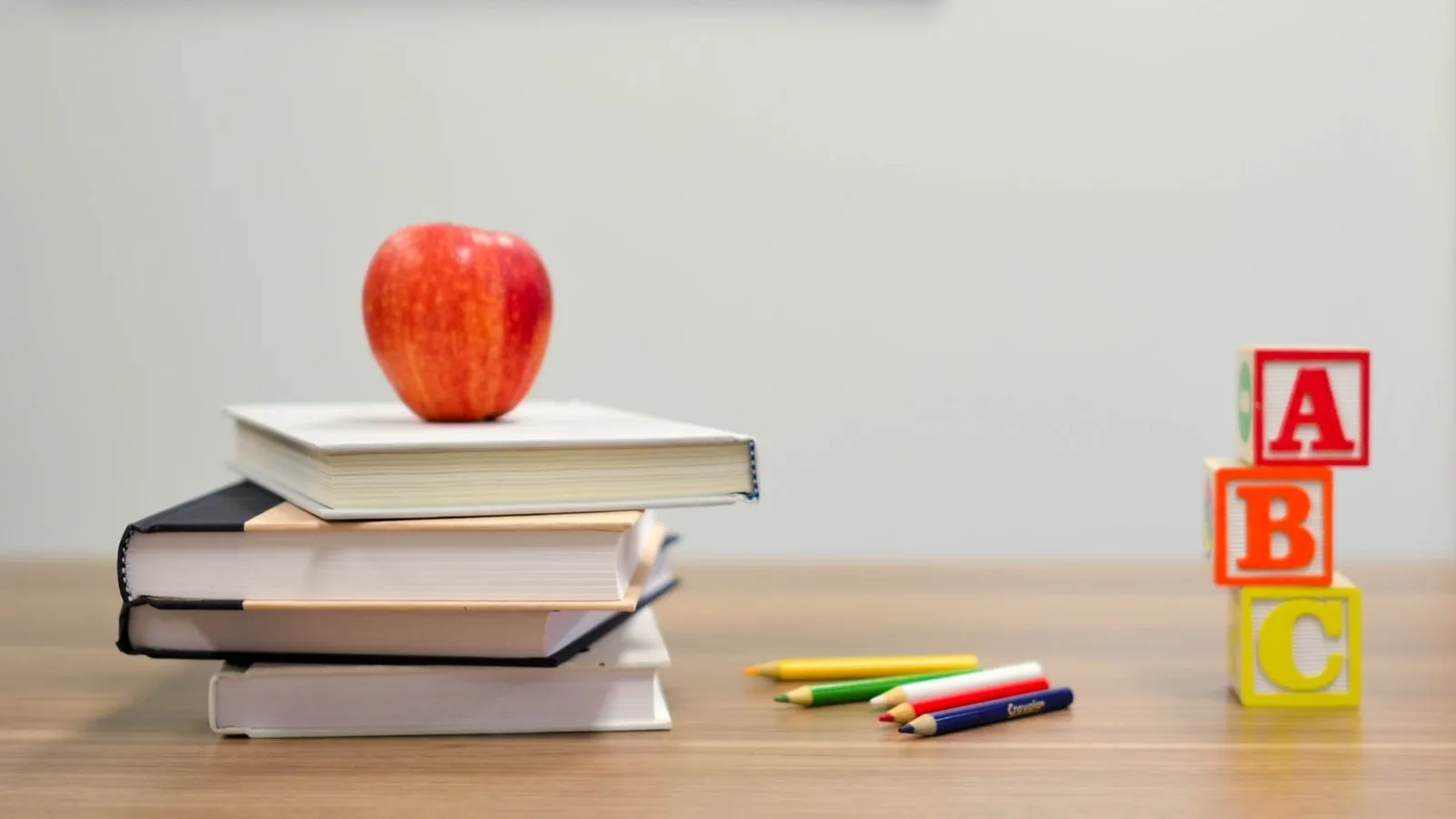What is the Best Way to Teach Reading? A Literacy Professor Weighs In
The best way to teach reading is a topic that has been hotly debated for many decades. If the past is any indicator, we’re going to be fighting about it for decades to come. It’s worth arguing about because literacy is important. Roughly 21% of American adults are illiterate. Illiteracy has harmful impacts on health, finances, and overall well-being. Thus, literacy is powerful and is a fundamental human right.
In case you haven’t read anything by me or been to my Book Riot page, let me introduce myself. I am a former elementary school teacher. After I left the classroom, I pursued my PhD in curriculum & instruction (with an emphasis on literacy) while working as a literacy consultant for the Kentucky Department of Education. Since then, I’ve been a professor who teaches people to teach kids to read. Thus, I have a LOT of opinions on this topic. Buckle up, friends!
To understand where we are in this conversation, we have to understand where we’ve been. Let’s dive in, shall we?
A Brief History of the “Reading Wars”
The debate about the best way to teach reading is not new, nor is the science complete. In fact, the “Reading Wars” have been going on for decades. Here’s a little bit about what we actually know.
Whole Language vs. Phonics
Even now, despite the changes in what we call things, the ongoing war is between those who believe a whole language approach is the best way to teach reading and those who advocate for a focus on phonics. The basic premise is that some educators believe in exposure to books and using meaning to help decode texts, and a competing faction that believes in phonics instruction as providing the necessary tools to decode text. Over the years, the field has swung between the two sides. For a couple of decades, whole language has been on top. Now, we’re shifting back to the phonics end of the spectrum.
Those against whole language are adamant that kids are being taught to guess at words they don’t know and that approach is failing them. Others who are against an overemphasis on phonics lament the drill-and-kill, decontextualized approach to reading. The truth is, both sides are right, and they’re also both wrong.
The “Science of Reading”
If the COVID-19 pandemic has taught us anything, it’s to listen to science. Unfortunately, that means there are some people in the world that can use so-called science to manipulate others. The “science of reading” is a hot term that has caught on lately, but it means nothing. The term was created by media outlets as a way to present an emphasis on phonics instruction.
In this recent surge of interest in reading, one state has been placed on a pedestal. A specific program produced growth in Mississippi, citing the highest growth of all states on the National Assessment for Education Progress (NAEP) in 2019. But the truth behind that program is much more complex. Nonetheless, state legislatures are scrambling to find the same success for their own populations.
Literacy researchers like me, as well as many teachers, are so tired of this game. It seems like every year there’s a new miracle program, a new way to do things. Unlike many professions, everyone has an opinion about teaching. The mentality of “those who can’t do, teach” has permeated our culture. People believe that teaching is an easy job. Consequently, our expertise is devalued and we’re not treated like other professionals — just take a look at the pay if you need more evidence.
Some of the Politics Behind the “Science of Reading”
Politics and education go hand-in-hand, so it’s important to look at who is pushing certain decisions. One interested stakeholder in all of this is the International Dyslexia Association (ILD). If you click that link, it’ll take you to a test that suggests most of us have dyslexia. In actuality, only 5–15% of the population has dyslexia. The organization has branches in 37 states and DC. Big Dyslexia (I’m sorry, I can’t help myself) treats all learning difficulties as dyslexia. They have a lot of support from worried parents and lawmakers, resulting in policy and curricular changes that aren’t necessarily sound.
Despite the fact that there is no best way to teach reading to all kids with reading disabilities, the ILD standards suggest otherwise. In my state, the ILD standards are being touted alongside standards from the International Literacy Association, which is a 60-year-old professional organization that is widely respected among teachers and researchers. ILA has responded to ILD, saying (among many other things), that ILD standards and claims are based on misinterpreted research and represent an inaccurate stance on teaching reading. According to ILA (p. 8):
“ILA’s position is that teachers do not need to spend substantial amounts of time learning about dyslexia, which, as has been argued, is a construct of questionable utility. Nor should teachers be obligated to learn a specific and poorly researched approach to preventing and remediating reading difficulties.”
The ILA represents the views of thousands of educators and educational researchers worldwide. The organization has contributed a great deal to what we know about the best way to teach reading. Yet many states are legislating that professional development and other resources be allotted to mitigating dyslexia. Again, educators are being undermined by outside stakeholders.
A Balanced Approach
I’m not supposed to say this anymore, but the best way to teach reading is through a balanced approach. Unfortunately, “balanced literacy” has become synonymous with whole language, so opponents of balanced literacy believe we already tried it and failed. What we’ve actually done is a little of this and a little of that, but none of it with enough time or fidelity.
Children need to be taught the code. They need to learn letter-sound relationships. However, since English often deviates from its own rules, phonics instruction isn’t enough. There are words that kids need to learn by sight. Additionally, there are patterns and word parts that kids can learn and apply to hosts of words.
While they’re learning all of this, kids need to encounter words in contexts. They need to apply their skills to a variety of text types. They need to fall in love with lots of great books so that they’re motivated to read. The best way to teach reading is to teach kids how language works and to give them lots of practice enjoying books.
Systematic Phonics Instruction
Phonics (and its precursor phonological awareness) are crucial to reading instruction. We have to teach children how to crack the code, which means we have to teach how letters work. Furthermore, we have to teach this in a systematic way. Teaching the letter of the week or any other arbitrary approach is not effective.
We need to take a developmental approach to literacy instruction. That means that we meet kids where they are and prepare them to move forward. Children move through developmental stages in reading, just like they do in other areas. We know from research that emergent readers typically start to develop letter-sound correspondence starting with beginning sounds in consonant-vowel-consonant (CVC) words (p. 11). They then start to notice and represent ending sounds, followed by medial vowels. Once they’ve mastered that, they move into the beginner stage and on through transitional, intermediate, and skillful. (Sometimes these stages go by other names or are broken down further.)
I don’t expect you to know what all that means, but teachers should. Knowing the stages of development means we can assess where a child is and use that information to plan appropriate instruction that will move the child forward in the developmental sequence. That’s how we determine which letters and other features to teach at a particular time. (And that’s why grade levels are nonsense that I promise to rant about at a later date.)
The best phonics instruction includes hands-on practice building words, practicing skills with developmentally appropriate texts, and getting targeted guidance. There’s no need to drill kids to death and make them hate reading. Phonics can be phun!
Exposure to Rich Texts
Surprise! Books help kids learn to read. Reading aloud to children of all ages offers a host of benefits from improving comprehension skills to expanding vocabulary. Further, these experiences foster a love of reading and increase motivation.
Children need to apply their decoding skills to actual books. They need exposure and access to lots of different kinds of books so they are prepared to read widely throughout their lives. Moreover, studies have found a correlation between access to books and literacy development.
As I mentioned earlier, the English language often deviates from its own rules. For example, all of these words include the long i sound: hi, flight, bye, cry, bite, pie. Thus, when we teach a child that the letter i makes a particular sound, we haven’t taught them all the ways to spell that sound.
This is another place books help. Children who read widely will encounter more words and more patterns. They’ll build a larger sight word vocabulary through exposure and practice. While we can’t teach every pattern and every exception to the rules, we can offer children opportunities to apply what they know to lots of situations by sharing great books.
A Focus on Comprehension
If you read a page of text, but you can’t explain what information it contained, did you really read? Decoding without comprehension is just word calling. To read, you have to make sense of the words you read. Children can only practice comprehension by reading words in context. That means they have to read books (and articles, passages, posts, etc.). Even the current literacy champ, Mississippi, acknowledges “language comprehension is equally important and works best when exposing students to high-quality, engaging instructional materials.”
The Bottom Line
It’s not surprising that people are grasping at miracle cures, considering that two-thirds of United States 4th graders are reading “below grade level.” (I will save my views on levels for another day.) We want what’s best for kids and for the world. That means we’ve got to teach people to read well.
Sadly, there’s no magic bullet. There’s no one program or strategy that will work in all classrooms. We are not going to read aloud or phonics our way into better literacy in this country. Reading is a complex process requiring a nuanced approach.
Reading is about comprehension. It’s about making sense of text so that you can gather information. That requires more than flash cards and letter-sound matching, but also more than being read to and having access to lots of books. Both sides need to come together and give a truly balanced approach a fair try.


